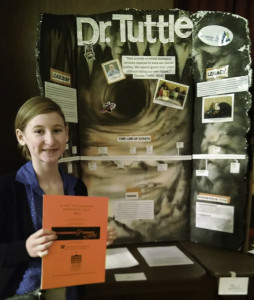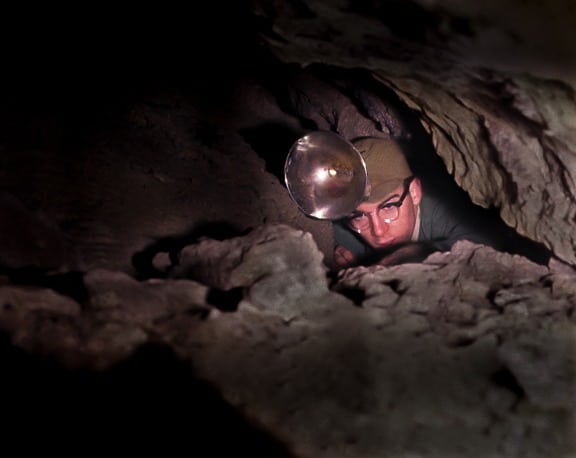The Costs of Bat Decline
Can we afford to lose bats? A recent study by Eyal Frank of the University of Chicago reveals that the dramatic decline in U.S. bat

October 20, 2014
Hi Dr. Tuttle,
How are you? Hope you guys are doing good. Say hi to Mrs. Tuttle for me. Below are the questions for my history project on Leadership & Legacy. Thanks for helping me!
Love,
Alexis 🙂
“Bat Girl”
1. What event inspired you to want to protect bats?
2. Was it difficult to get BCI started?
3. What is your favorite bat?
4. Can you please give me a quote for my project about bat conservation?

October 30, 2014
Hi Alexis,
The following are my responses to your questions. Good luck with your project!
1. It wasn’t just one event. It was an accumulation of seeing lots of gray bat colonies being destroyed. I was aware that these bats were harmless and highly beneficial. However public health officials were claiming them to be dangerous carriers of rabies despite the fact that no one had ever gotten rabies from a gray bat, or that getting rabies from any kind of bat was extremely rare. I couldn’t resist explaining this to cave owners, and when they changed from killing to protecting their bats, I was encouraged to do more.
2. Founding Bat Conservation International required hard work. When I founded BCI most people were extremely frightened of bats. Even leading conservation organizations avoided them like the plague, considering them to be too unpopular to be helped. I had to spend huge amounts of time preparing scientific documentation and learning to put claims of disease dangers in perspective. For example, I pointed out that while only two people, on average, die of bat rabies each year in the U.S. 20-30 are killed by dogs. How could we consider bats dangerous and dogs safe, given these facts? In the end the facts about bat values versus risks are so strong that they are easy to defend if we just arm ourselves with the facts. Great success in life can only be achieved by tackling great challenges.
3. I don’t have a favorite bat, though I especially enjoy working with carnivorous species, because they seem to be exceptionally intelligent. But even the tiny woolly bats that I recently worked with in Borneo turned out to be far smarter than I had ever imagined, and I thoroughly enjoyed working with them. Check out the video of them bumping me in the nose to gain my attention to feed them (see woolly bat blogs on my web site at merlintuttle.com).
4. Bats provide essential ecological services required to keep our planet healthy. We cannot ignore their plight without risking our own future.
Paula says hi.
Very best wishes,
Merlin
November 4, 2014
Hi Dr. Tuttle,
Thanks so much for answering my bat questions. History fair is in a couple of weeks. I’ll let you know how it goes. Science fair is coming up too. 🙂
My history project is called “Batman of BCI” and my science fair project is called “Bat Chat–using echolocation to determine WNS effects.”
Talk to you soon. Tell Mrs. Tuttle hi for me. Have fun and be safe on your next bat trip.
Have a “Bat”tastic Day,
Alexis
“Bat Girl”
Love our content? Support us by sharing it!
Can we afford to lose bats? A recent study by Eyal Frank of the University of Chicago reveals that the dramatic decline in U.S. bat
Bats are among the most fascinating yet misunderstood creatures in the natural world, and for many conservationists, a single experience can ignite a lifelong passion
Many bat conservationists know that Kasanka National Park in Zambia is an exceptional place for bats, but it is also the place that sparked my
The Kasanka Trust is a non-profit charitable institution, which secures the future of biodiversity in Kasanka National Park in Zambia. They welcome internships for students
2024 © Merlin Tuttle’s Bat Conservation. All rights reserved.
Madelline Mathis has a degree in environmental studies from Rollins College and a passion for wildlife conservation. She is an outstanding nature photographer who has worked extensively with Merlin and other MTBC staff studying and photographing bats in Mozambique, Cuba, Costa Rica, and Texas. Following college graduation, she was employed as an environmental specialist for the Florida Department of Environmental Protection. She subsequently founded the Florida chapter of the International DarkSky Association and currently serves on the board of DarkSky Texas. She also serves on the board of Houston Wilderness and was appointed to the Austin Water Resource Community Planning Task Force.
Michael Lazari Karapetian has over twenty years of investment management experience. He has a degree in business management, is a certified NBA agent, and gained early experience as a money manager for the Bank of America where he established model portfolios for high-net-worth clients. In 2003 he founded Lazari Capital Management, Inc. and Lazari Asset Management, Inc. He is President and CIO of both and manages over a half a billion in assets. In his personal time he champions philanthropic causes. He serves on the board of Moravian College and has a strong affinity for wildlife, both funding and volunteering on behalf of endangered species.